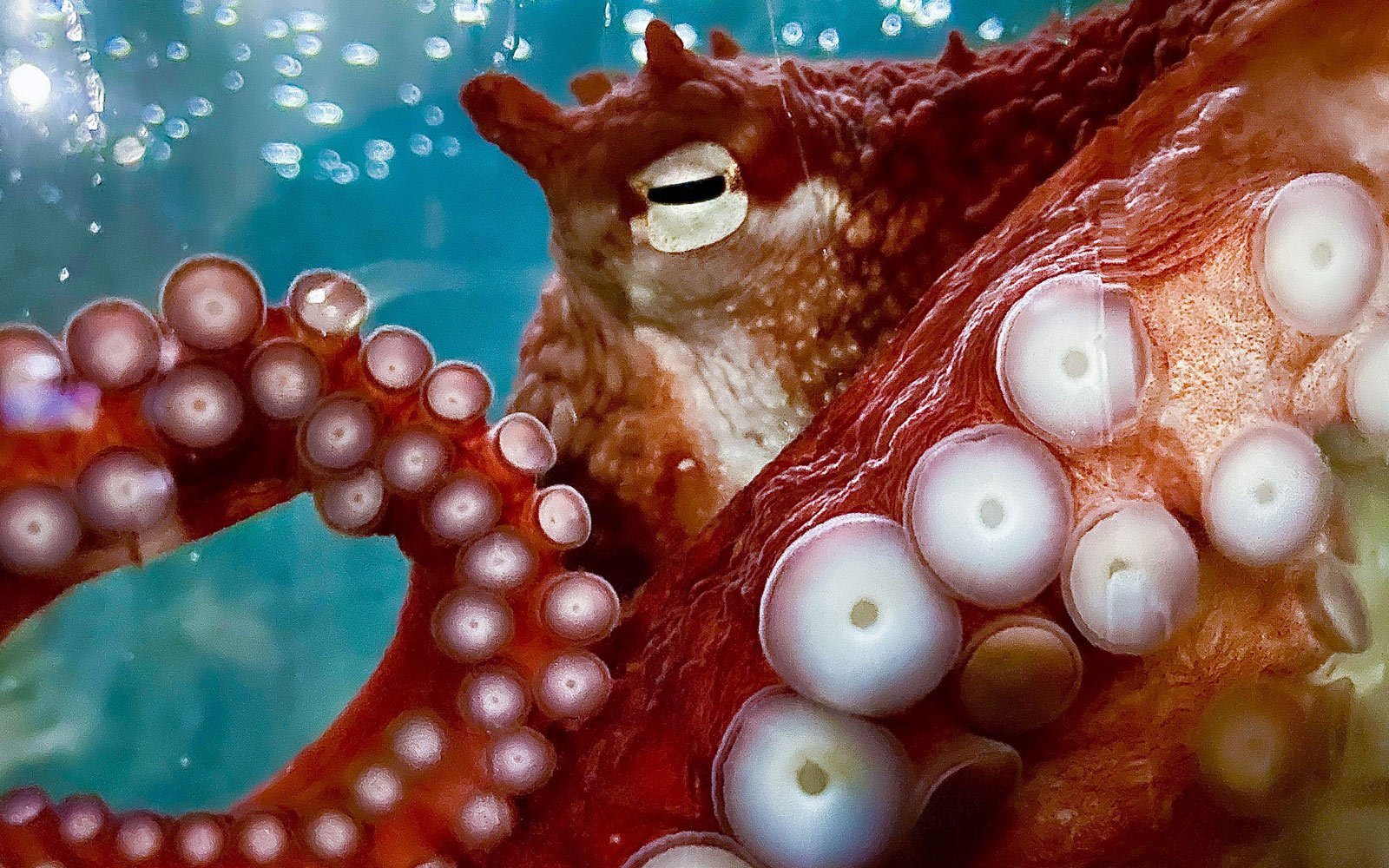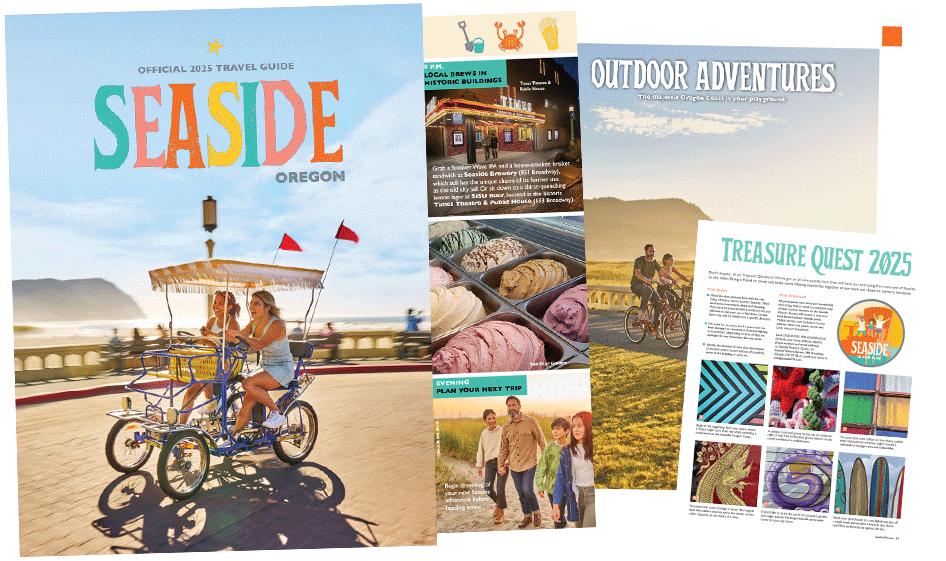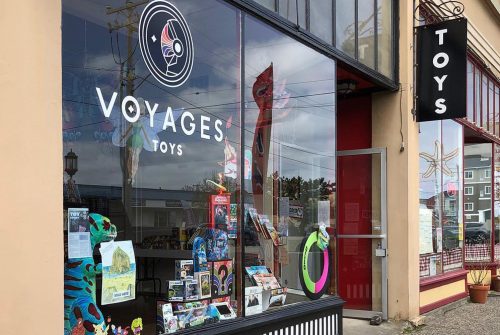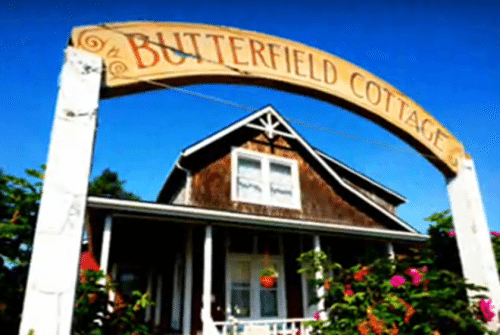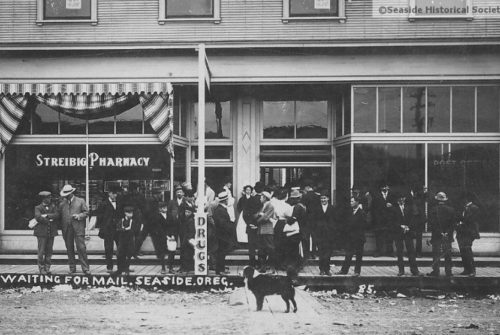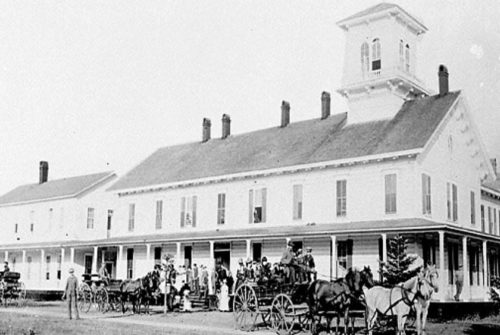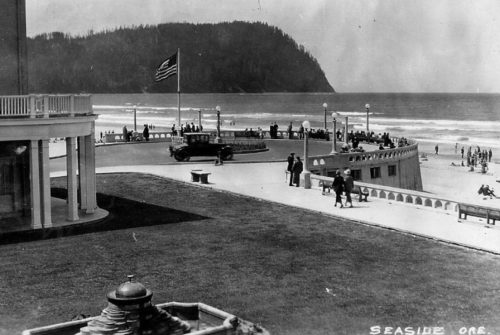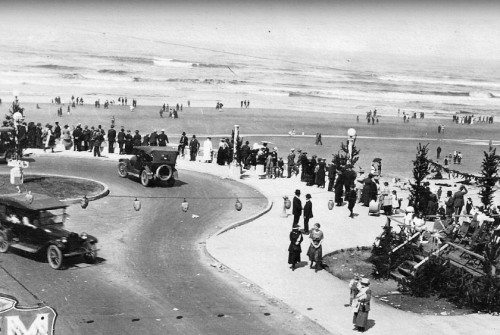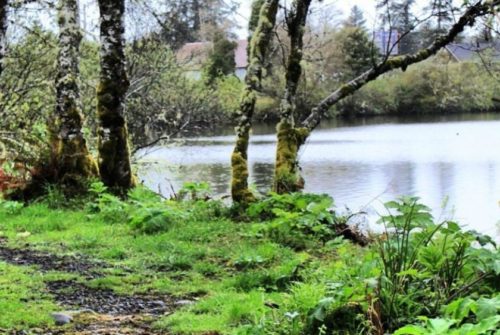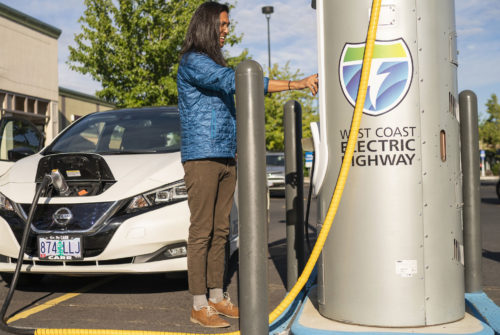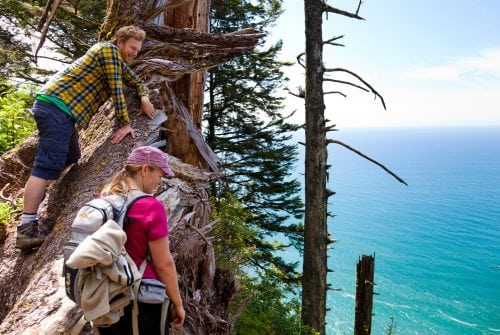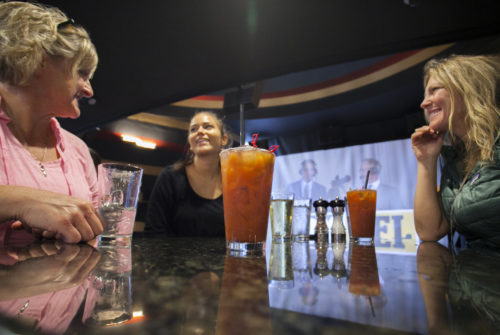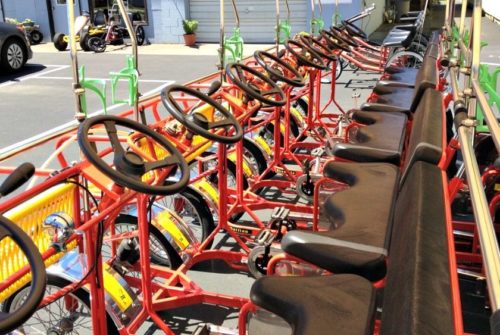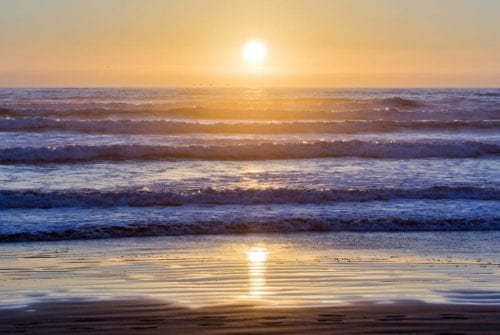SEASIDE SPOTLIGHT: Our latest profile in a series focused on the behind-the-scenes movers who make Seaside the unique destination it is today. Previously.
The Seaside Aquarium has been a fixture on the Prom for as long as anyone can remember; it dates back to 1937, one of the oldest aquariums on the West Coast. It remains one of Seaside’s most popular attractions, giving visitors an up-close look at the marine life that lives in and around the nearby waves. The aquarium’s assistant manager, Tiffany Boothe, serves as an ambassador to the creatures of the sea.
“People are here on vacation — we want them to have fun,” says Boothe. “We also hope to shift their perspectives on how they view the beach.”
The aquarium’s role has evolved over the years from entertainment to education and awareness, with displays and programs that help visitors learn about and care for the coastal environment. “It’s a living ecosystem — a home for lots of plants and animals,” she says. “If we learn how to be respectful when we recreate, we can play a part in keeping our marine environment healthy.”
Boothe, who grew up in Alaska in a family of commercial fishers, joined the aquarium in 2001 while still in high school. She stayed on as she pursued a degree in marine biology, able to continue her learning on the job. “That’s one reason I love it here,” Boothe explains. “I get to do a bit of everything.”
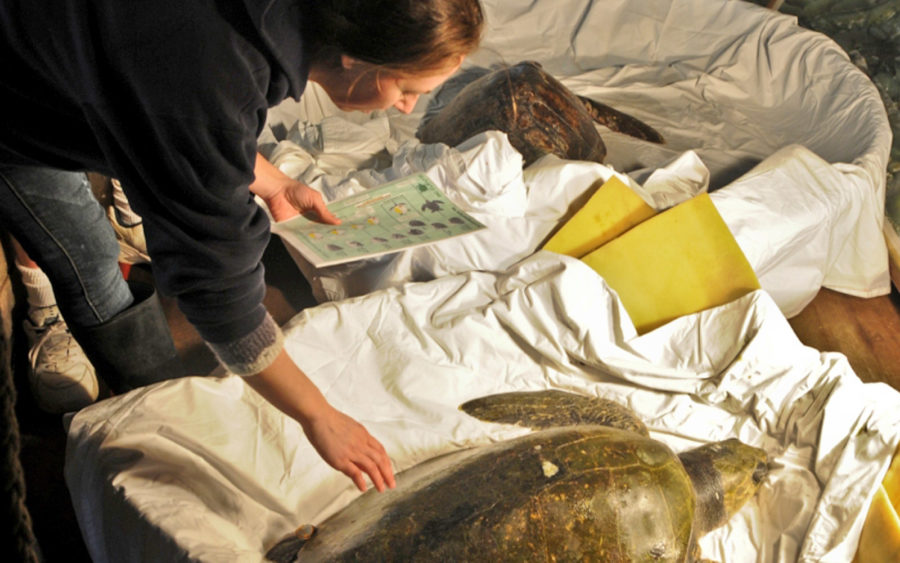 Tiffany Boothe
Tiffany Boothe
A Mission of Education and Outreach
Interpretation is Boothe’s favorite role. Her efforts are apparent on the displays throughout the aquarium and the Discovery Cards that guests can take with them. If you’ve ever wondered why crab shells litter the beach or if fish get thirsty, the Seaside Aquarium has your answer.
Its Beach Discovery Program is another engaging way to educate. Held Sundays in July and August, the free program welcomes passersby to stop by the beachfront tent to examine creatures in a touch tank, peer at plankton and aquatic plants under a microscope, and discuss different minerals in the sand.
Out of the public eye, the aquarium’s staff is always busy helping marine life. Their efforts include regional rescue efforts like transporting injured wildlife to the Wildlife Center of the North Coast in Astoria. The aquarium plays an important role in the Southern Washington/Northern Oregon Marine Mammal Stranding Network, providing on-site assistance, animal transport and public education regarding marine mammals on the beach.
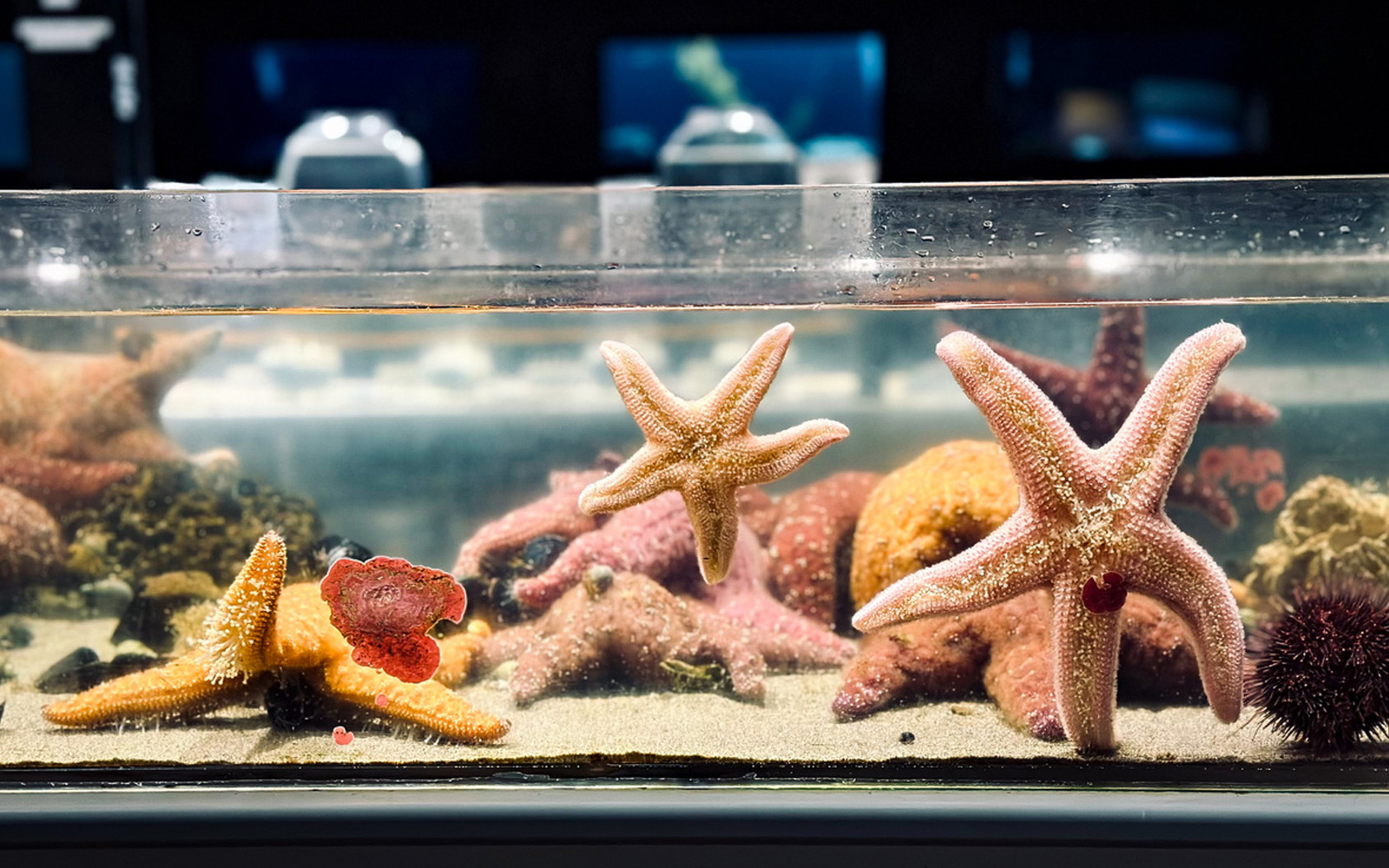 Touch Tanks
Touch Tanks
Seeing What’s Undersea
Thirty-five glass tanks line the aquarium walls, housing rockfish and wolf eels, all kinds of sea stars, crustaceans and more. A giant Pacific octopus in a central tank waves its twisty arms at visitors; touch tanks let the curious interact with anemones, urchins and other tide pool creatures.
Nearly all the animals housed in the aquarium are native to the Oregon Coast. Many are raised on-site. In a back room full of tanks, Boothe points out baby skates hatched from casings that washed up on the beach, and tiny week-old pipefish (relatives of seahorses) that will soon rejoin their parents in the tanks up front.
Undoubtedly, the aquarium’s most famous residents are its 10 harbor seals, stealing the show with their balletic swimming skills and disarming cuteness. They, too, were born here. The Seaside Aquarium was one of the first aquariums to successfully breed harbor seals, and some of those delighting visitors today are sixth-generation residents.
Protecting Wildlife on the Beach
While the aquarium-reared seals wouldn’t be able to survive in open waters, Boothe and her team are active in protecting their wild cousins along the Coast. Much of their work with the stranding network, she says, is preemptive — teaching people to stay at least 100 yards from an animal that appears stranded on the beach. (Ditto for their dogs.)
Often, seals and sea lions that appear to be in distress may actually be out to rest, molt or give birth, explains Boothe. Mothers also leave their pups alone on the beach while they hunt. Approaching, touching or attempting to move them will do more harm than good. When in doubt — or if the animal in question is a whale, porpoise or the threatened Guadalupe fur seal — Boothe recommends you call the aquarium or the West Coast Regional Stranding Hotline immediately.
“People are well meaning — they want to help,” she adds. “The good news is education works.”
